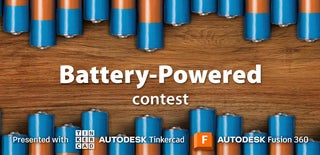Introduction: Thermoelectric Beverage Cooler
Using thermoelectric semiconductors for cooling uses a lot of power as they are less than 5% efficient and take an age to cool a mini fridge. I wondered if this could be improved upon by directly cooling the beverage. I didn't have huge hopes but was inspired to do some tests to gauge the likelihood of success. The aim being able to cool beer while camping, powering the cooler with 4 battery packs.
Supplies
Step 1: Cools Down
The first test was to connect a 5v thermoelectric semiconductor to a battery pack with the heat side placed against a heat sink (small block of aluminum). This cooled to -2.1c but it didn't last long - as the heat sink started to heat up within a few minutes. Not a promising start.
Step 2: Heats Up Too
The other hot side of the semiconductor, got hot quickly, reaching 86 c. My initial thoughts were cooling is likely to be modest and will only be possible if the hot side's heat is dissipated quickly. I will try flowing water through the small aluminum block placed on the hot side as this is likely to give more effective heat removal than a fan.
Step 3: Water Cooled
In order to connect the mini pump to the aluminum heat exchanger, 3 different sized plastic tubes had to be used as they had different sized connections. The heat exchanger was placed on the hot side of the semiconductor. The pump and semiconductor were power up and half a liter of water recirculated through the heat exchanger. This worked and the cool side of the semiconductor remained cool. A promising result.
Step 4: Upscale
Four, 5-volt semiconductors were sandwiched between 2 aluminum heat exchange blocks. On the semiconductor's hot side water will be circulated. On the cold side beverage to be cooled will be recirculated. Four battery packs will power the thermoelectric semiconductors and the 2 mini pumps. Each will give out about 10 watts (5 Volts x 2 amps) of power for a total power usage of about 40 watts. It's a pity most of this will not be used in cooling as thermoelectric semiconductor are less than 5% efficient.
Step 5: Trying It Out
A 375-mil aluminum can of beverage was attempted to be cooled by having its contents recycled through the cold side of the semiconductor.
The aluminum block on the hot side of the semiconductor recycled 1.5 liters of cold water from a jug to stop it heating up. It was noticed the cold water started to raise in temperature, so the jug was placed in a sink and cold water from the tap steadily poured into it. This kept the water at 19c.
During the first 20 minutes the beverage cooled 2 degrees c and over the first hour the beverage was cooled by 4c. If this kept up the beverage would be cold in another 3 hours.
But the cooling rate didn't continue and over the next hour only cooled by 0.5c more. Close but no cigar.
Reluctantly, I discontinued testing - having formed the view there are better ways to cool beer.

Participated in the
Battery-Powered Contest













